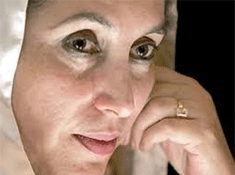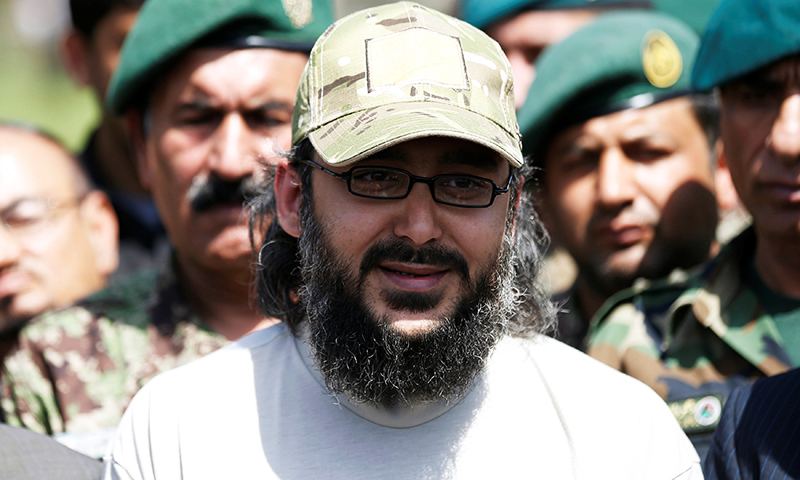Twist in Benazir murder case to benefit Musharraf

ISLAMABAD: Former director general of the National Crisis Management Cell, Brig (retd) Javed Iqbal Cheema’s ‘modified’ statement in a Rawalpindi anti-terrorism court in the Benazir murder case that he had blamed Baitullah Mehsud for the assassination after discussing the issue with the heads of the spy agencies, will favour Pervez Musharraf, even though the UN commission’s inquiry report had concluded that the TTP chief was implicated under Musharraf’s directions.
Brig Cheema surprised many on January 16, 2015 by retracting his earlier statement in a Rawalpindi ATC when the Federal Investigation Agency had produced him before the court as prime witness against General (retd) Pervez Musharraf in connection with the Benazir murder case. Cheema submitted before the ATC on January 16 that he held the press conference after discussing the matter with the then heads of spy agencies and the then secretary interior Kamal Shah. He simply did not mention Musharraf’s name in his statement. In his previous statement submitted to the ATC on February 7, 2011, Cheema said that he had addressed a press conference on December 28, 2007, on the advice of Musharraf to dispel negativity prevailing against his regime. Cheema had announced hardly 24 hours after the murder that it was masterminded by Baitullah Mehsud and that Benazir Bhutto had died because her head smashed against the lever of her vehicle’s sunshade.
This could as well have become the official version of the high profile murder case. But much to the Musharraf regime’s discomfiture, several privately-run television channels released on December 29, 2007 chilling images of a sharpshooter firing at Ms Benazir Bhutto a few seconds before the deadly suicide explosion occurred. At the same time, the manufacturers of Ms Bhutto’s bulletproof vehicle had already made it clear that there was no metallic lever in the automobile, which could have caused the wound to her head. The medical report of Benazir Bhutto also did not mention any such cause of death.
At his December 28, 2007 news conference, Brig Cheema had stated: “We just have an intelligence intercept recorded this morning in which Baitullah Mehsud congratulated his people for carrying out the cowardly act of Benazir Bhutto’s murder”. Cheema then presented an audiotape of a conversation between Baitullah (identified as Amir sab in the tape) and ‘Maulvi sab’, adding that the TTP ameer was the architect of the murder plot. But once Musharraf was out of power, Brig Cheema conceded that the decision to address the press conference was taken at a meeting held the same morning at the Rawalpindi camp office with the then president and the chief of army staff General Pervez Musharraf in the chair. Brig (retd) Ejaz Hussain Shah, the former chief of the Intelligence Bureau (IB) and a trusted aide to General Musharraf, also confirmed in his statement before the court that “the meeting was held; the intercepted CD and medical report was provided by the ISI while the briefing was given by DG-Counter Intelligence to the participants.”
Soon after the press conference, Cheema was quick to distribute the English and Urdu transcriptions of the taped conversation, which he claimed had taken place between Baitullah Mehsud and Maulvi Sahib. Yet, despite repeated demands by the newsmen covering the press conference, neither the original tape was provided nor was it proven that the recorded voice was that of Baitullah Mehsud. On December 29, 2007, a day after Cheema’s press conference, PPP spokesman Farhatullah Babar refuted the Musharraf regime’s claim. He told newsmen that after the October 2007 suicide attack in Karachi targeting her homecoming procession, Bhutto had received a message from Baitullah: “Identify your enemy, I am not your foe, I have nothing to do with you or against you or with the murder attempt on you on October 18”. The top PPP leadership trusted the message, Babar said, adding that the message from Baitullah was conveyed through two different reliable emissaries.
Similarly, Para 157 of the United Nations inquiry commission’s report states: “The decision to blame Baitullah Mehsud was taken on the morning of 28 December 2007 during a high-level meeting at a facility in the General Headquarters [in Rawalpindi] known as the Camp Office and presided over by General Pervez Musharraf. That meeting, at which General Pervez Musharraf was briefed on the intercept and on medical evidence, was attended by the Directors General of the ISI, MI and the IB. Brig (retd) Javed Iqbal Cheema was summoned to a subsequent meeting at ISI headquarters and directed by the director general of the ISI to hold the press conference. In attendance at this second meeting, in addition to Brigadier Cheema, were interior secretary Kamal Shah, director general of the ISI, director general of the IB, deputy director general of the ISI and another ISI brigadier.”
The UN report stated in Para 158: “The Musharraf government asserted that the evidence for the cause of death was clear. According to the government, video footage showed that the shooter’s bullets did not hit Ms Bhutto. Based on the medical report indicating that she died of heavy bleeding from a head wound on the right side of her head, the Musharraf government set out its conclusion, through Brigadier Cheema, that she must have hit her head on the lever of the vehicle’s escape hatch. The press conference was met with widespread public skepticism and media outrage in Pakistan. The PPP and others accused the government of a cover-up. Many questioned the sudden and timely appearance of the telephone intercept as well as the speed with which its contents were analysed and interpreted. Many also challenged the view that Ms Bhutto had not been shot and questioned how quickly that purported analysis had been done. Furthermore, many senior PPP officials believed the government was suggesting, in an effort to demean Ms Bhutto, that she had caused her own death by emerging from her vehicle. In short, the press conference not only failed to provide credible answers to essential questions arising from the assassination, it triggered widespread suspicion that the government authorities would not be conducting a genuine search for the truth”.
The UN commission then observed in Para 159 of its report that the press conference by the Brig not only failed to provide credible answers to essential questions arising from the assassination, it triggered widespread suspicion that the government authorities would not be conducting a genuine search for the truth. About the telephonic conversation produced by Cheema as evidence of Baitullah’s involvement, the UN report stated: “The commission is not in a position to evaluate the authenticity of the purported intercept. Any further investigation into Ms Bhutto’s assassination must include steps for such authentication. It is not clear how or when the intercept from the ISI was recorded. The commission is not in a position to assess the credibility of this information from the ISI”.
However, since the Musharraf regime was adamant to prove that the Bhutto murder was masterminded by none other than Baitullah, the latter was declared a proclaimed offender in the Bhutto murder case on March 1, 2008. But the Joint Investigation Team formed by the PPP government claimed in its report that Musharraf had directed Brig Cheema to hold a press conference and blame Baitullah Mehsud for the murder in a bid to influence the investigations in the case. Musharraf was eventually indicted in the Bhutto murder case by a Rawalpindi ATC in April 2013. And Brig Cheema’s modified statement is believed to be an attempt to favour the former military dictator who is already facing the treason trial.
http://www.thenews.com.pk/Todays-News-13-35336-Twist-in-Benazir-murder-case-to-benefit-Musharraf




